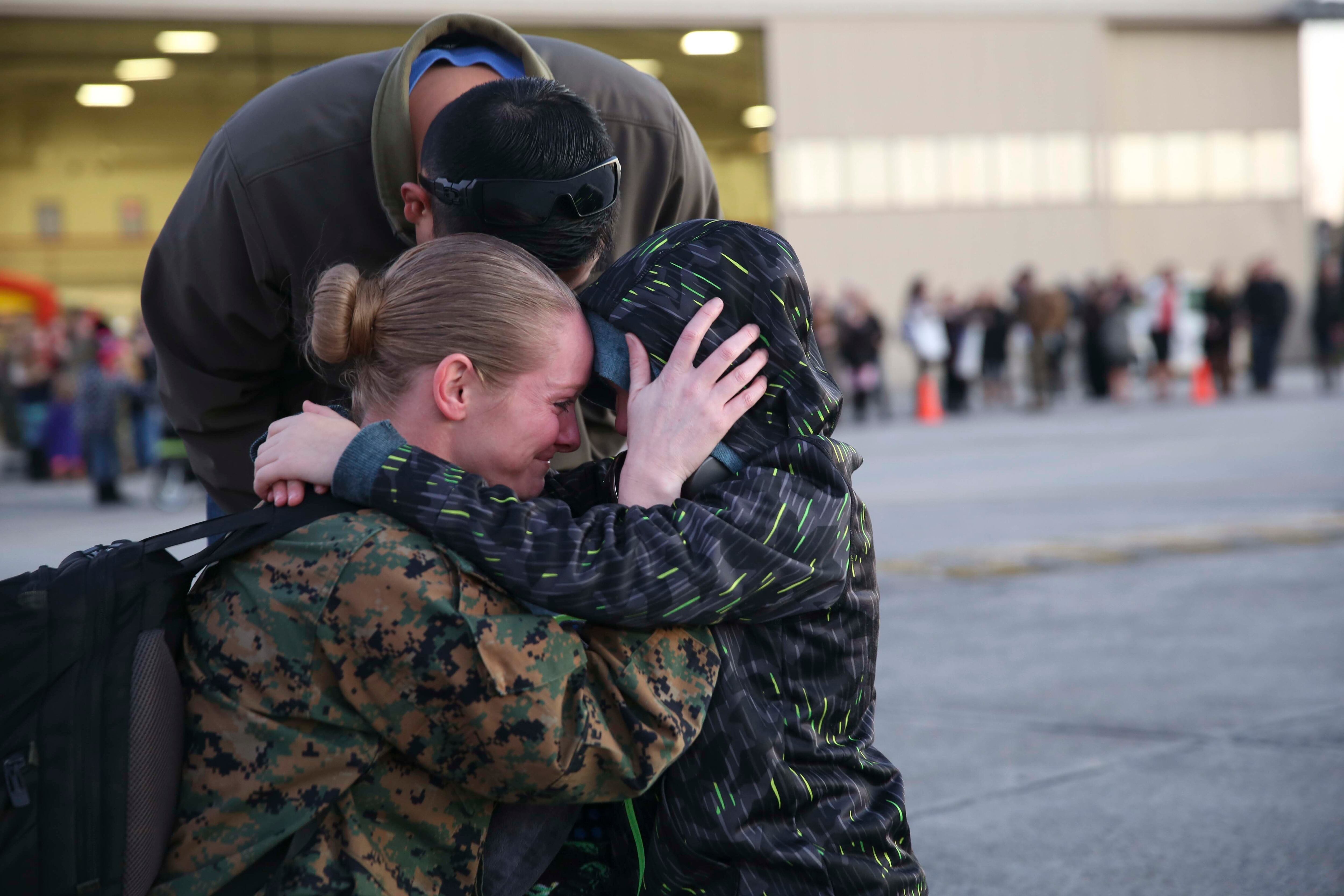The Corps just dished out a new parental leave policy that is retroactive to December 2016, and that means more leave and greater flexibility for Marines.
Primary caregivers and those on maternity convalescent leave are afforded up to 42 days of non-charged leave, according to a new MARADMIN. Secondary caregivers can take up to 14 days, all retroactive to Dec. 23, 2016.
The big change here is that paternity leave — or, to use the gender neutral term, secondary caregiver leave — is increasing from 10 days to 14, and the Corps is giving greater flexibility to Marine families on how they use their parental leave.
“The Marine Corps’ parental leave policy is designed to provide Marines with the flexibility afforded by law when balancing career and personal decisions,” Maj. Garron Garn, a Marine spokesman, told Marine Corps Times.
So who rates what leave?
Maternity convalescent leave is for the actual birth parent and is “intended for the medical needs of the birth parent,” according to the MARADMIN.
The birth parent can take primary caregiver leave in conjunction with maternity convalescent leave for a total of 12 weeks, but can also opt not to.
The total leave time is not really a change. The Defense Department has a standard 12-week maternity leave policy, but the new policy does provide greater flexibility.
“If a female Marine gets pregnant and has a child, she’ll go on her maternity convalescent leave for six weeks, which has been the case before,” Garn said.
“But now, instead of being required to take the remaining six weeks consecutively, she has the option of delaying that for up to a year, or if she is dual military, her husband can take that.“
RELATED

The MARADMIN defines the primary caregiver as “the parent with primary responsibility of care for the child in the case of a qualifying birth event or adoption.”
For dual military couples, one parent would be the primary caregiver and the other designated as secondary.
The secondary caregiver is “the parent not primarily responsible for care of the child in the case of a qualifying birth event or adoption,” the MARADMIN states.
“Designation as a PC [primary caregiver] or SC [secondary caregiver] shall be made as early as practical, normally at least 60 days in advance of the due date (in the case of a birth event) or anticipated date of a qualifying adoption,” the MARADMIN reads.
The new policy is retroactive to Dec. 23, 2016.
If a secondary caregiver has already taken 10 days of parental leave for a birth event that falls in the retroactive period, he or she is now only eligible for an extra four days, for a total of 14.
That means if you’re a Marine dad who was granted 10 days of paternity leave during the retroactive period, you’ve got another four days of secondary caregiver leave you can take.
The same math pans out for someone designated as a primary caregiver. If you adopted a child during the retroactive window and already took 21 days of adoption leave, you have an additional 21 days of primary caregiver leave you can take.
“Because the family situation varies from Marine to Marine, there is not a ’one size fits all’ solution for every birth event or adoption scenario,” Garn explained. “Marines, in coordination with their chain of command, can establish a family care plan that meets their individual needs, personally and professionally."
More details of the recent MARADMIN can be found here.
Shawn Snow is the senior reporter for Marine Corps Times and a Marine Corps veteran.



